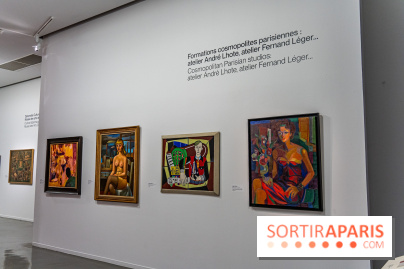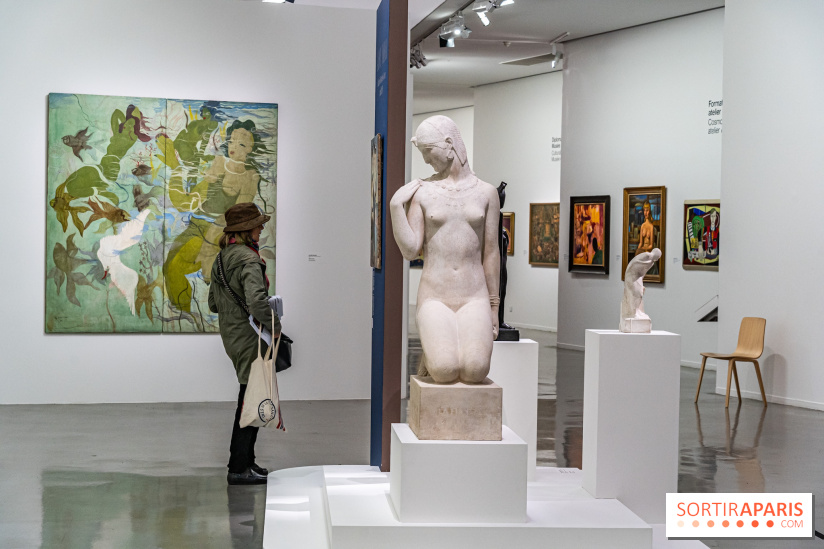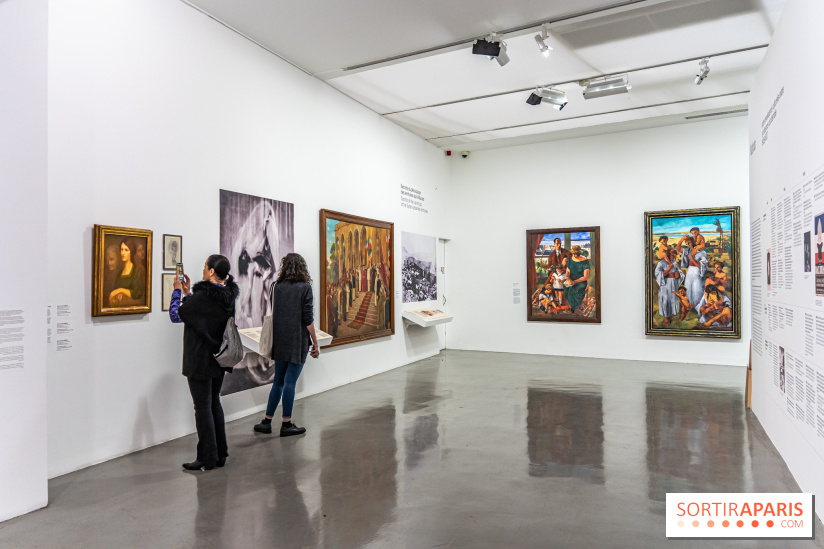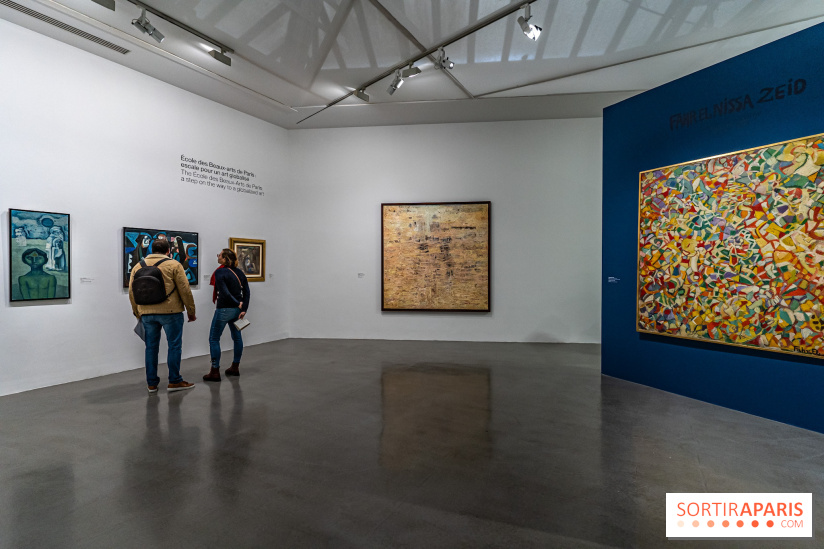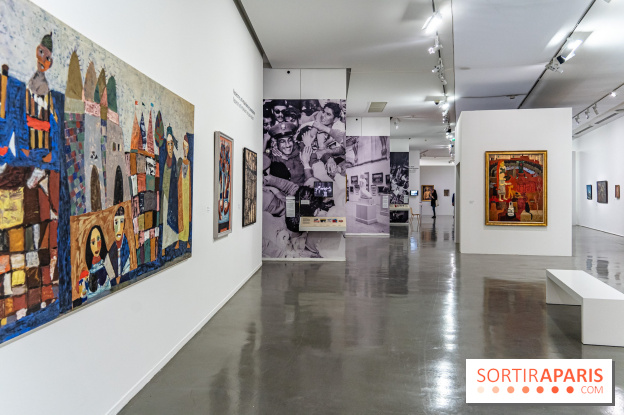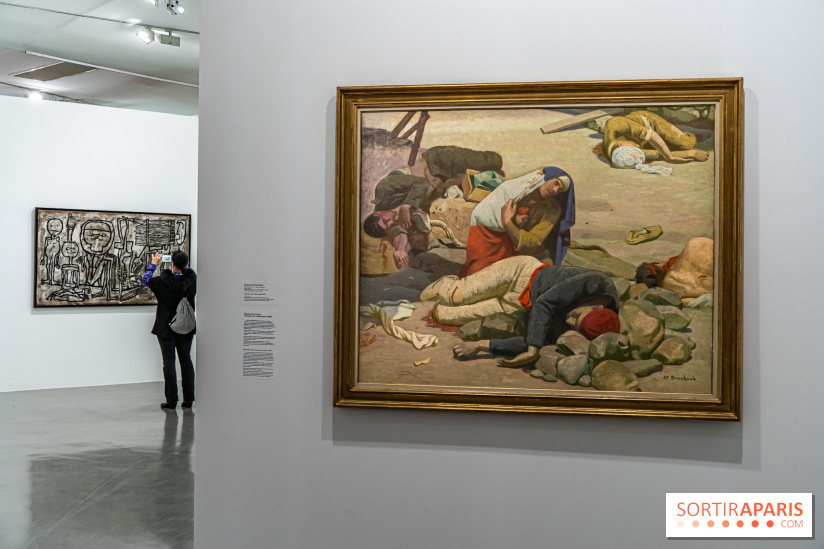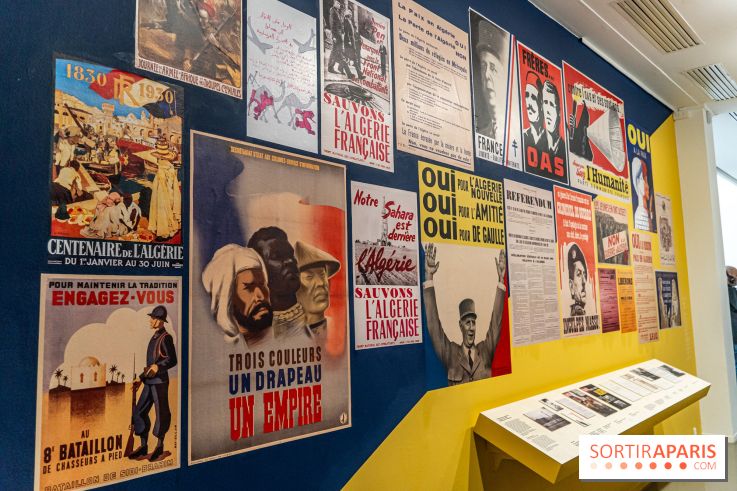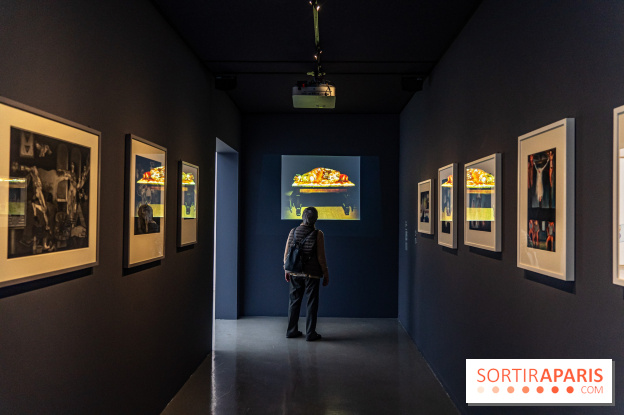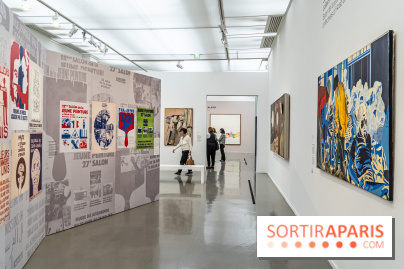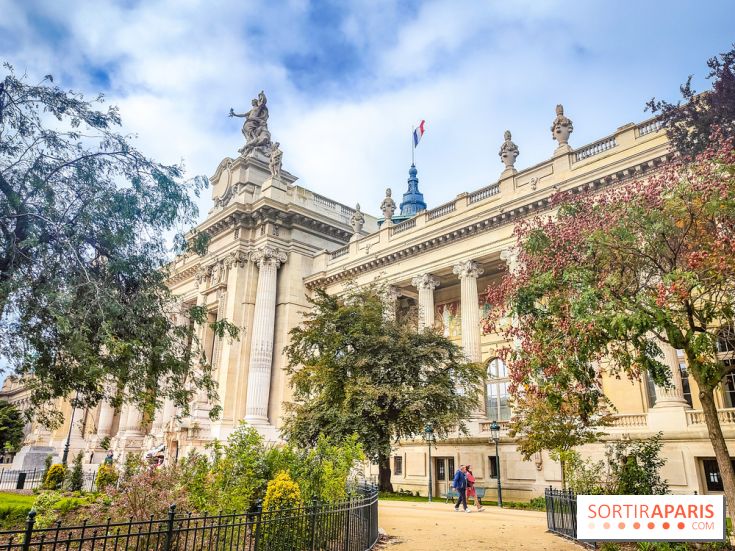Andy Warhol, Picasso, Klimt, Dali, Rothko... The twentieth century has seen many great artists, known and recognized for their work, regularly exhibited in museums and art institutions. There are, however, many highly talented artists who are not fully appreciated in France and Europe.
The Musée d'Art Moderne is particularly interested in twentieth-century Arab artists, who are little known on the European art scene. To right this wrong, the museum is organizing a major exhibition from April 5 to August 25, 2024. Entitled Présences arabes - Art moderne et décolonisation - Paris 1908-1988, the exhibition features twentieth-century artists from Syria, Morocco, Egypt, Iraq, Algeria, Tunisia and elsewhere.
In all, more than 200 works are on display, most of which have never before been shown in France. Paintings, sculptures, photographs, sound and audiovisual archives make up this long journey, which reveals the wealth ofmodern Arab art, as well as the links between Arab artists and Paris, from 1908 to the turn of the 21st century. Nearly 130 artists are highlighted in this exhibition, artists who are rarely represented, yet whose works have made an essential contribution to the Arab avant-garde and to the history of modern art in the 20th century.
The 20th century was a fundamental period in the construction of Arab identity. Art accompanied decolonization, helping to create a national and cultural identity of its own. Schools, salons, museums and cultural exchanges also enabled many artists to find their voice and gain recognition for their art.
The exhibition is organized around the careers of artists trained in their local schools of fine arts, considered both as prestigious establishments and vectors of cultural and educational colonization, before their arrival in Paris. It illustrates how, for many of them, their Parisian experience helped free them from the colonial burden. It is presented in four parts, in chronological order.
First, there's the Nahda, the Arab cultural renaissance influenced by Western and colonial countries. The Nahda, symbolized by the work of Egyptian sculptor Mahmoud Mokhtar in Paris, embodies both an aspiration for freedom and openness, and a quest for identity and Arab cultural renaissance in the face of Western influence at the beginning of the 20th century. This period marked the emergence ofthe "indigenous artist" in countries such as Egypt, Algeria and Morocco, influenced by the French Beaux-Arts model, yet often confined to an orientalist representation of their own culture.
However, artists such as Philippe Mourani, Mohammed Racim and Mahmoud Saïd succeeded in expressing an authentic vision of the Orient, transcending the Westernized view. This period also saw the rise of an intellectual and anti-colonial movement, manifested in the development of critical journals, caricature and private galleries, challenging colonial stereotypes and asserting a cultural identity of their own.
Then cameindependence: abstract art and a return to one's roots prompted artists to assert their heritage and artistic freedom. The period from 1937 to 1956 marked a period of transition and artistic rebellion for the newly independent Arab countries (Lebanon, Syria, Egypt, Iraq), where artists rejected orientalism to embrace the avant-garde.
Through figures such as the Art et Liberté group in Egypt and the Algerian artist Baya, this period testifies to a quest for artistic authenticity and resistance to colonialism, weaving links between art, surrealism and anti-colonial movements. Paris played a key role as a cosmopolitan crossroads, allowing young Arab artists to immerse themselves in the currents ofabstraction and theavant-garde, thus contributing to the evolution of Arab artistic expression in the post-colonial context.
The period of decolonization, violence and political affairs then had a major influence on the art scene, and the desire for emancipation was reflected in the art of the younger generations. Between 1956 and 1967, in the wake of Moroccan, Tunisian andAlgerian independence, modern art in North African countries became both a means of challenging colonial violence and a vehicle for cultural diplomacy.
The tensions of the Algerian revolution prompted French artists to express their solidarity with the Algerian people, while movements such as the Casablanca School and the Aouchem group used art to denounce colonial oppression. Despite the integration of Arab artists into the French cultural landscape, notably through the Biennale internationale des jeunes artistes de Paris, the contradictions and dilemmas of artistic identity in exile reflect the complexities of decolonization and the repercussions of political events, such as the repression of October 17, 1961, on the art world.
Finally, we discover committed artists who express themselves on immigration, major international conflicts and political upheavals. From 1967 to 1988, Arab art and intellectualism, deeply marked by the Six-Day War and Israel's victory, were part of a global context of struggles for emancipation, with strong solidarity for the Palestinian cause in France, echoing the movements of May '68.
Arab artists mobilized art as a means of resistance and political expression, notably through the Salon de la jeune peinture in Paris and various collectives, testifying to the vitality and challenges of Arab counter-culture in the face of censorship in their home countries. Etel Adnan's "Arab Apocalypse" became a cry against regional violence, anticipating the horrors of massacres such as those at Sabra and Chatila. At the same time, a postcolonial consciousness began to emerge in France, criticizing the inequalities and violence suffered by immigrant communities, while museum initiatives sought to valorize these cultures within French society.
This is a journey rich in works and history, enabling us to discover important Arab artists, unjustly forgotten creators, and a great page of recent history. A must-see exhibition at Paris' Musée d'Art Moderne!
Dates and Opening Time
From April 5, 2024 to August 25, 2024
Location
Musée d'Art Moderne de Paris
11, avenue du Président Wilson
75116 Paris 16
Prices
Moins de 18 ans: Free
Billets: €10 - €12
Official website
www.mam.paris.fr
More information
Open Tuesday to Sunday, 10 a.m. to 6 p.m. Nocturne on Thursday until 9:30 p.m.


